|
|
 |
|
September 28, 2010
(Robert Whitley's Creators Syndicate Wine Talk column for this week.)
The readers usually write with questions of some sort, and this week I was presented with a challenging task. A Chicago couple planning a Halloween party for about 60 wanted a wine recommendation — so far so good. Their price point of about $8, however, limited the options. Or so I thought.
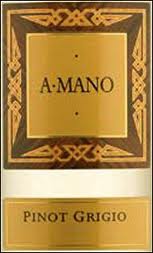 The $8 category is bloated with wine brands that are courting the under-$10 segment of the market, which represents the vast majority of all wine drinkers. Production levels in this price range are generally voluminous with hundreds of thousands of cases produced annually — if not millions. The $8 category is bloated with wine brands that are courting the under-$10 segment of the market, which represents the vast majority of all wine drinkers. Production levels in this price range are generally voluminous with hundreds of thousands of cases produced annually — if not millions.
The more I considered the question, the more I realized that a number of wine companies actually serve this market well. In blind tastings at the numerous wine competitions that I oversee, inexpensive wines time and again crop up with silver and gold medals.
Although hardly ever esoteric or profound, many of the less expensive wines consistently meet a high standard by delivering clean wines that are not only missing any obvious flaws, but they are also well-balanced and high in what some winemakers call the "yum" factor.
A good example would be the 2009 A Mano Pinot Grigio ($8) from the Delle Venezie region of northern Italy. At the recent Sommelier Challenge wine competition in San Diego, sommeliers Desi Eschavarrie of Las Vegas and George Skorka of Los Angeles both awarded the A Mano a silver medal. If this is your price point, bingo! When I looked even further back at the Critics Challenge in May, I found that Elin McCoy of Bloomberg News had given the A Mano '09 Pinot Grigio a silver medal, as well. And Patrick Comiskey of the Los Angeles Times also awarded a silver medal to the A Mano 2007 Primitivo.
Here was a producer who obviously must be doing something right. Seeing this, I decided to take a closer look at those two competitions to ferret out the producers who seemed to have the best track record in this arena. The results are what follow.
Ballatore: Producers of domestic sparkling wine made in an Asti Spumante style, the Gran Spumante won a gold medal at both competitions and the Rosso Spumante had silver at each. Retail price: $8.
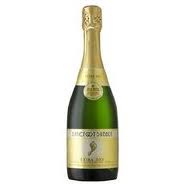 Barefoot Bubbly: Now owned by the giant E & J Gallo Co., this winery bills itself as the most medaled winery in the United States. Indeed, it always does well in these blind tastings. Barefoot Bubbly captured four medals from the sommeliers and three from the critics. Retail price: $10-$11. Barefoot Bubbly: Now owned by the giant E & J Gallo Co., this winery bills itself as the most medaled winery in the United States. Indeed, it always does well in these blind tastings. Barefoot Bubbly captured four medals from the sommeliers and three from the critics. Retail price: $10-$11.
Barefoot Cellars: The sister winery of Barefoot Bubbly, Barefoot Cellars frequently mixes vintages to balance quality, hence most of its wines are non-vintage. The sommeliers gave Barefoot Cellars five medals, the critics three, but each of those three — a Shiraz, a Zinfandel and a Pinot Grigio — was a gold.
Retail price: $7.
Barokes Wines: Anyone who hikes or camps or canoes will love the innovative packaging. Barokes comes in 4-ounce cans, and it won two medals in each of the competitions in the category for alternative packaging. The critics awarded a gold for a Cabernet-Shiraz-Merlot blend and a silver for the Bubbly Chardonnay-Semillon. The sommeliers had a platinum for the Bubbly Cabernet-Shiraz-Merlot and a silver for the Bubbly Rose. Retail price: $4.
Bella Sera: This mass-produced Italian import won three medals between the two competitions, including golds for the 2008 Chianti DOCG and the Pinot Grigio IGT from the Veneto. Retail price: $7.
Black Swan: From South Eastern Australia, Black Swan is a huge player in the under-$10 market. It won three silver medals in each competition. The sommeliers and critics agreed on the Riesling and Pinot Grigio, while the sommeliers went for a silver in Shiraz and the critics a silver in Merlot. Retail price: $8.
Concannon Vineyard: Renowned for its Petite Sirah, Concannon is one of the two big names from California's Livermore Valley (the other is Wente). The sommeliers went all silver on six Concannon wines, while the critics gave out seven medals, three of those gold. Every year, Concannon comes up as one of my favorite "value" wineries. Though a few of these wines top $10, patient shoppers will find some that might be "suggested retail" at $14 for a bit less. Retail price: $10-$14.
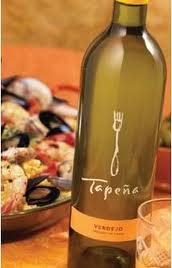 Tapena: This Spanish brand from the Tierra de Castilla region of La Mancha, south of Madrid, is one of my personal "house" wines. They're delicious and cheap. The critics gave both the 2008 Garnacha and Tempranillo gold, and the 2008 Verdejo received silver. The sommeliers gave the 2009 Rose gold and the Verdejo silver. This winery benefits from ultramodern technology in both the vineyard and the cellar, with a watchful eye on quality despite large volumes. Retail price: $10. Tapena: This Spanish brand from the Tierra de Castilla region of La Mancha, south of Madrid, is one of my personal "house" wines. They're delicious and cheap. The critics gave both the 2008 Garnacha and Tempranillo gold, and the 2008 Verdejo received silver. The sommeliers gave the 2009 Rose gold and the Verdejo silver. This winery benefits from ultramodern technology in both the vineyard and the cellar, with a watchful eye on quality despite large volumes. Retail price: $10.
Turning Leaf: This E & J Gallo value brand can be found everywhere, and it's always better than decent for the price. The critics awarded Turning Lead three medals, including a gold medal for the 2009 Pinot Grigio. The sommeliers awarded two silvers and also went for the Pinot Grigio.
The preceding mentions represent the wineries that were consistent winners in both wine competitions. Of course, there were many wineries in the value category that entered one competition but not the other. The sole point of this exercise is to demonstrate that the under-$10 range (and sometimes slightly above) can produce wines that even wine professionals and connoisseurs find enjoyable.
If your price point is $10 and below, do not be discouraged by consistent medal-winners that show a suggested retail price of $12-$14. Big-box stores and retail wine and liquor chains often negotiate favorable wholesale prices that allow for steep discounts on the retail shelf. It should surprise no one to find a $14 wine on sale for $9.99.
That's good to know. Even better is the fact that many of them have passed the blind-taste test with flying colors.
Posted by Robert Whitley at 12:51 PM
|
|
(Robert Whitley's Creators Syndicate Wine Talk column this week.)
The readers usually write with questions of some sort, and this week I was presented with a challenging task. A Chicago couple planning a Halloween party for about 60 wanted a wine recommendation — so far so good. Their price point of about $8, however, limited the options. Or so I thought.
The $8 category is bloated with wine brands that are courting the under-$10 segment of the market, which represents the vast majority of all wine drinkers. Production levels in this price range are generally voluminous with hundreds of thousands of cases produced annually — if not millions.
The more I considered the question, the more I realized that a number of wine companies actually serve this market well. In blind tastings at the numerous wine competitions that I oversee, inexpensive wines time and again crop up with silver and gold medals.
Although hardly ever esoteric or profound, many of the less expensive wines consistently meet a high standard by delivering clean wines that are not only missing any obvious flaws, but they are also well-balanced and high in what some winemakers call the "yum" factor.
A good example would be the 2009 A Mano Pinot Grigio ($8) from the Delle Venezie region of northern Italy. At the recent Sommelier Challenge wine competition in San Diego, sommeliers Desi Eschavarrie of Las Vegas and George Skorka of Los Angeles both awarded the A Mano a silver medal. If this is your price point, bingo! When I looked even further back at the Critics Challenge in May, I found that Elin McCoy of Bloomberg News had given the A Mano '09 Pinot Grigio a silver medal, as well. And Patrick Comiskey of the Los Angeles Times also awarded a silver medal to the A Mano 2007 Primitivo.
Here was a producer who obviously must be doing something right. Seeing this, I decided to take a closer look at those two competitions to ferret out the producers who seemed to have the best track record in this arena. The results are what follow.
Ballatore: Producers of domestic sparkling wine made in an Asti Spumante style, the Gran Spumante won a gold medal at both competitions and the Rosso Spumante had silver at each. Retail price: $8.
Barefoot Bubbly: Now owned by the giant E & J Gallo Co., this winery bills itself as the most medaled winery in the United States. Indeed, it always does well in these blind tastings. Barefoot Bubbly captured four medals from the sommeliers and three from the critics. Retail price: $10-$11.
Barefoot Cellars: The sister winery of Barefoot Bubbly, Barefoot Cellars frequently mixes vintages to balance quality, hence most of its wines are non-vintage. The sommeliers gave Barefoot Cellars five medals, the critics three, but each of those three — a Shiraz, a Zinfandel and a Pinot Grigio — was a gold.
Retail price: $7.
Barokes Wines: Anyone who hikes or camps or canoes will love the innovative packaging. Barokes comes in 4-ounce cans, and it won two medals in each of the competitions in the category for alternative packaging. The critics awarded a gold for a Cabernet-Shiraz-Merlot blend and a silver for the Bubbly Chardonnay-Semillon. The sommeliers had a platinum for the Bubbly Cabernet-Shiraz-Merlot and a silver for the Bubbly Rose. Retail price: $4.
Bella Sera: This mass-produced Italian import won three medals between the two competitions, including golds for the 2008 Chianti DOCG and the Pinot Grigio IGT from the Veneto. Retail price: $7.
Black Swan: From South Eastern Australia, Black Swan is a huge player in the under-$10 market. It won three silver medals in each competition. The sommeliers and critics agreed on the Riesling and Pinot Grigio, while the sommeliers went for a silver in Shiraz and the critics a silver in Merlot. Retail price: $8.
Concannon Vineyard: Renowned for its Petite Sirah, Concannon is one of the two big names from California's Livermore Valley (the other is Wente). The sommeliers went all silver on six Concannon wines, while the critics gave out seven medals, three of those gold. Every year, Concannon comes up as one of my favorite "value" wineries. Though a few of these wines top $10, patient shoppers will find some that might be "suggested retail" at $14 for a bit less. Retail price: $10-$14.
Tapena: This Spanish brand from the Tierra de Castilla region of La Mancha, south of Madrid, is one of my personal "house" wines. They're delicious and cheap. The critics gave both the 2008 Garnacha and Tempranillo gold, and the 2008 Verdejo received silver. The sommeliers gave the 2009 Rose gold and the Verdejo silver. This winery benefits from ultramodern technology in both the vineyard and the cellar, with a watchful eye on quality despite large volumes. Retail price: $10.
Turning Leaf: This E & J Gallo value brand can be found everywhere, and it's always better than decent for the price. The critics awarded Turning Lead three medals, including a gold medal for the 2009 Pinot Grigio. The sommeliers awarded two silvers and also went for the Pinot Grigio.
The preceding mentions represent the wineries that were consistent winners in both wine competitions. Of course, there were many wineries in the value category that entered one competition but not the other. The sole point of this exercise is to demonstrate that the under-$10 range (and sometimes slightly above) can produce wines that even wine professionals and connoisseurs find enjoyable.
If your price point is $10 and below, do not be discouraged by consistent medal-winners that show a suggested retail price of $12-$14. Big-box stores and retail wine and liquor chains often negotiate favorable wholesale prices that allow for steep discounts on the retail shelf. It should surprise no one to find a $14 wine on sale for $9.99.
That's good to know. Even better is the fact that many of them have passed the blind-taste test with flying colors.
COPYRIGHT 2010 CREATORS.COM.
Posted by Robert Whitley at 12:02 PM
|
|
September 21, 2010
(Robert Whitley's Creators Syndicate Wine Talk Column for this week.)
If you are anything like most wine enthusiasts, a fair number of your tasting experiences occur while dining out. And if you are anything like me, sometimes you order a wine off the restaurant list and sometimes you bring your own.
When I bring my own, I expect to pay a corkage fee. I understand and accept this. Even a small restaurant has a significant investment in its wine inventory and must eke out a profit on its wine service, even if the service is merely providing stemware and pulling the cork.
It can go beyond that, of course, and the extra effort is always appreciated. Take, for example, my recent dinner at A.R. Valentien in La Jolla, Calif., with longtime friend and colleague Bruce Schoenfeld of Travel & Leisure magazine.
It was a reunion of sorts because neither of us had seen the other in several years, so each of us brought a special bottle of wine. The two together would have cost several hundred dollars had we ordered them off the list — if the wines had even been available, which they weren't.
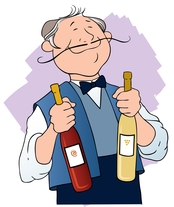 So even though we ordered another bottle of wine from the restaurant inventory, I was neither shocked nor disappointed to find a corkage fee had been added when I asked for the bill. You buy one but bring in two, you should accept the corkage and be happy the tab is a bit lighter, despite the addition of the service charge. So even though we ordered another bottle of wine from the restaurant inventory, I was neither shocked nor disappointed to find a corkage fee had been added when I asked for the bill. You buy one but bring in two, you should accept the corkage and be happy the tab is a bit lighter, despite the addition of the service charge.
I had a different experience a couple of weeks later that wasn't nearly as clear-cut, and it ultimately tainted the experience as well as my opinion of the restaurant. It was at a new, fairly trendy spot that boasts a small but astute list of wines at moderate prices. There are a couple of $100-plus wines on this list, but most fall between $30 and $50.
We were a group of seven, including three sommeliers from the just-finished Sommelier Challenge international wine competition. I brought two extraordinary red wines from my wine cellar; not to save money, but rather to share something personal and special with my guests. More often than not, that is the motivation for taking a wine from home into a restaurant that obviously has a decent wine selection of its own.
Over the course of the dinner, we ordered four bottles of wine from the restaurant's list. Not too shabby for a group of seven. That was in addition to the two I brought. So, I was a bit stunned when I asked for the check and found two corkage fees had been added to the tab. For unlike my evening at A.R. Valentien, on this night we ordered generously from the restaurant's offering.
I was all the more surprised because this was and is a wine savvy restaurant that is trying to build its clientele and cultivate loyalty in what is a difficult environment for new restaurants. It is common courtesy to waive any corkage fees when a customer also orders in abundance off the wine list.
I bit my lip and said nothing, however, because this certainly is not a requirement, which brings me to my point. If you plan to take a bottle of wine out with you, know the restaurant's corkage policy.
I didn't and I only have myself to blame — for my assumption that the fee would be waived if I purchased enough wine turned out to be bogus.
My second point is that even if you know the restaurant's policy, it might serve you well to call ahead. I have often negotiated either a lower corkage or a complete waiver by calling in advance and explaining that I intended to purchase from the restaurant wine list, even though I was bringing in a bottle or two from my own cellar.
That gives the owner or manager the opportunity to clear a corkage waiver in advance with your server. Most servers would not have the authority to waive the corkage fee on their own. These are the things you can do to avoid an awkward discussion at the table and perhaps save yourself a few bucks.
Restaurants have a role in this drama as well, for the economic downturn has opened a Pandora's box of innovative promotions to keep struggling restaurants afloat. A number of these are wine related, including a rapidly growing movement to eliminate corkage fees altogether. Some restaurants have adopted such a policy with tremendous success.
Other popular promotions include half-price wine nights and "no-corkage" nights. The fact that these promotions often lead to packed restaurants tells me those who dine out on a regular basis are tired of the high price of wine in restaurants, and they absolutely loathe paying a corkage fee. How else to explain the surge in business when those barriers are lowered?
Personally, I don't mind paying a corkage fee when I believe it is fair. But when I purchase four bottles of wine for seven people and still get tagged with a fee for the two bottles I brought from home, I leave feeling a bit gouged.
I doubt I am alone.
Posted by Robert Whitley at 2:37 PM
|
|
September 19, 2010

No discussion of stellar performers at the 2010 Sommelier Challenge would be complete without a few superlatives for the Valdubon winery of Spain's Ribera del Duero region.
Valdubon entered two wines and earned two medals, including Wine of the Year in a near-unanimous show of hands from the 12 sommeliers brought in to evaluate the 635 wines submitted to this second-year international wine competition.
 While the 2003 Valdubon Crianza won the competition's most prestigous trophy, the 2004 Valdubon Reserva came away with gold. A reasonable person might conclude Valdubon, with its attractive prices at $18 and $24 for the two medal-wining wines, is worthy of even the most ambitious cellars. While the 2003 Valdubon Crianza won the competition's most prestigous trophy, the 2004 Valdubon Reserva came away with gold. A reasonable person might conclude Valdubon, with its attractive prices at $18 and $24 for the two medal-wining wines, is worthy of even the most ambitious cellars.
I would also throw a kudo in the direction of California wineries V. Sattui, Wente and Quady. Sattui is the Napa Valley powerhouse that always cleans up in any competition lineup, this time bagging 17 medals and Best of Class Zinfandel; Wente represented the Livermore Valley in style, winning a platinum and gold medal with two of its top-shelf Nth Degree wines; and Quady, the dessert-wine specialist, scored two platinums and took Best of Show Dessert wine.
And take a look at the medals won by that winery from Colorado, The Winery at Holy Cross Abbey!
Quady Winery
Best of Show Dessert NV Starboard Batch 88 California $15.00 - Desi Eschavarrie - George Skorka
Silver 2008 Elysium Black Muscat California $17.00 - Desi Eschavarrie - George Skorka
Platinum 2008 Essensia Orange Muscat California $17.00 - Will Costello
Gold NV Deviation Orange Muscat California $28.00 - Anani Lawson
Quinta Da Zaralhoa
Platinum 2006 Douro DOC, Reserva Portugal $20.00 - Desi Eschavarrie - George Skorka
Robert Oatley
Gold 2008 Chardonnay Mudgee $16.00 - Anani Lawson
Gold 2009 Sauvignon Blanc Pemberton $16.00 - Lisa Redwine
Rocca Delle Macie
Gold 2007 Chianti Classico DOCG Italy $16.00 - Andre Mack - Lisa Redwine
Schloss Reinhartshausen
Gold 2007 Old Vines Riesling Rheingau $20.00 - Anani Lawson
Sequana
Silver 2008 Pinot Noir, Dutton Ranch Green Valley of Russian River Valley $40.00 - Brian Donegan
Best of Class Pinot Noir, 2008 Pinot Noir, Sarmento Vineyard Santa Lucia Highlands $32.00 - Brian Donegan - Jennifer Tremayne
Steppe Cellars
Best of Class Red Bordeaux Blend 2007 Artemisia Columbia Valley $27.00 - David Lusby - Megan Yelenosky
The Winery At Holy Cross Abbey
Silver 2008 Cabernet Franc Colorado $23.00 - Jesse Rodriguez - Michael Scaffidi
Silver 2008 Cabernet Sauvignon, Reserve Colorado $30.00 - Andre Mack - Lisa Redwine
Silver 2008 Merlot Colorado $21.00 - Jesse Rodriguez - Michael Scaffidi
Silver 2008 Merlot, Reserve Colorado $26.00 - Jesse Rodriguez - Michael Scaffidi
Silver 2007 Syrah, Reserve Colorado $30.00 - Will Costello
Silver 2008 Chardonnay Monterey $19.00 - Jesse Rodriguez - Michael Scaffidi
Platinum NV Riesling American $15.00 - Michael Scaffidi
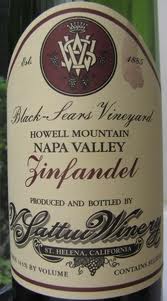 V. Sattui Winery V. Sattui Winery
Gold NV Angelica California $30.00 - Anani Lawson
Silver 2007 Cabernet Franc Alexander Valley $30.00 - Jesse Rodriguez - Michael Scaffidi
Silver 2007 Cabernet Sauvignon Mount Veeder $40.00 - Brian Donegan - Jennifer Tremayne
Silver 2007 Cabernet Sauvignon Napa Valley $30.00 - Brian Donegan - Jennifer Tremayne
Silver 2007 Merlot Napa Valley $25.00 - Andre Mack - Lisa Redwine
Gold 2007 Merlot, Henry Ranch Los Carneros $29.00 - Andre Mack - Lisa Redwine
Gold 2008 Syrah Napa Valley $29.00 - Andre Mack
Silver 2008 Zinfandel, Ramazzotti Vineyard Dry Creek Valley $36.00 - George Skorka
Gold 2008 Old Vine Zinfandel, Quaglia Vineyard Napa Valley $39.00 - Desi Eschavarrie
Best of Class Zinfandel 2008 Zinfandel, Black-Sears Vineyard Howell Mountain $40.00 - David Lusby - Megan Yelenosky
Gold 2008 Zinfandel, Gilsson Vineyard Russian River Valley $35.00 - Megan Yelenosky
Gold 2008 Zinfandel Dry Creek Valley $25.00 - David Lusby
Silver 2008 Zinfandel, Crow Ridge Vineyard Russian River Valley $33.00 - David Lusby - Megan Yelenosky
Gold 2007 Prestige Cuvee Brut Napa Valley $22.00 - Anani Lawson
Gold 2008 Chardonnay Los Carneros $26.00 - George Skorka
Silver 2008 Chardonnay Napa Valley $19.75 - George Skorka
Silver 2009 Sauvignon Blanc Napa Valley $18.25 - Andre Mack - Lisa Redwine
Gold 2009 Sauvignon Blanc, Vittorio's Vineyard Napa Valley $22.00 - Michael Scaffidi
Valdubon
Wine of the Year 2003 Crianza, Ribera Del Duero Spain $18.00 - David Lusby - Megan Yelenosky
Gold 2004 Reserva, Ribera Del Duero Spain $24.00 - David Lusby - Megan Yelenosky
Vina Robles
Platinum 2007 Signature Paso Robles $39.00 - Jennifer Tremayne
Silver 2008 RED 4, Huerhuero Paso Robles $16.00 - Jennifer Tremayne
Gold 2009 WHITE 4, Huerhuero Paso Robles $16.00 - Brian Donegan - Jennifer Tremayne
Silver 2007 Petite Sirah, Jardine Paso Robles $26.00 - Jesse Rodriguez - Michael Scaffidi
Silver 2009 Sauvignon Blanc, Jardine Paso Robles $16.00 - Lisa Redwine
Wente Vineyards
Platinum 2007 Nth Degree Cabernet Sauvignon Livermore Valley $60.00 - David Lusby
Gold 2008 Nth Degree Merlot Livermore Valley $50.00 - Andre Mack
Click here for complete results of the Sommelier Challenge.
Posted by Robert Whitley at 10:00 AM
|
|
September 17, 2010
I'm always happy to see wineries that I might consider underdogs achieve at a major international wine competition. It takes a bit of courage -- as well as a bit of confidence -- for an eastern U.S, winery to mingle with many of the stars of California, Washington, France, Italy and Spain.
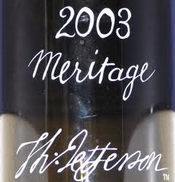 Virginia and New York are not the traditional regions we would explore to find a great bottle of wine, though wine has been a part of the culture of those states since the Founding Fathers. Virginia and New York are not the traditional regions we would explore to find a great bottle of wine, though wine has been a part of the culture of those states since the Founding Fathers.
But in recent years it has become evident that both produce exceptional wines, and the recognition of the dozen assembled sommeliers for the 2nd annual Sommelier Challenge International Wine Competition provides additional ammunition for the vintners of those regions.
Yesterday I highlighted the outstanding performance of Belhurst Winery of the Finger Lakes region and today I direct your attention to the stellar performance of Jefferson Vineyards of Monticello, Virginia: One platinum, two golds and two silvers. Wow!
In addition, I give you a number of other performances that caught my eye, including the seven silver medals taken by Middle Sister with its lineup of well made, tasty $12 wines.
Glen Carlou
Platinum 2006 Grand Classique Paarl $20.00 - Desi Eschavarrie
Gold 2009 Chardonnay Paarl $16.00 - Anani Lawson
 Gloria Ferrer Gloria Ferrer
Silver 2006 Merlot, Estate Grown Carneros $19.00 - Jesse Rodriguez
Silver 2005 Pinot Noir, Jose S. Ferrer Selection Carneros $35.00 - Jesse Rodriguez
Silver 2005 Pinot Noir, Rust Rock Terrace Carneros $40.00 - Michael Scaffidi
Gold 2005 Blanc De Blancs Carneros $24.00 - Lisa Redwine
Gold NV Brut Sonoma County $20.00 - David Lusby - Megan Yelenosky
Gold 2002 Royal Cuvee Carneros $32.00 - Will Costello
Best of Show Sparkling, NV Va de Vi Sonoma County $22.00 - David Lusby - Megan Yelenosky
Silver 2006 Brut Rose Carneros $42.00 - Andre Mack - Lisa Redwine
Gold 1999 Carneros Cuvee Carneros $50.00 - Brian Donegan - Jennifer Tremayne
Platinum 2007 Chardonnay, Estate Grown Carneros $18.00 - Jesse Rodriguez - Michael Scaffidi
J. Lohr
Platinum 2007 Cuvee St. E Paso Robles $50.00 - George Skorka
Gold 2007 Cabernet Sauvignon, Hilltop Vineyard Paso Robles $35.00 - Jesse Rodriguez - Michael Scaffidi
Gold 2008 Pinot Noir, Fog's Reach Arroyo Seco $25.00 - Will Costello
Gold 2007 Chardonnay, Arroyo Vista Arroyo Seco $25.00 - Will Costello
Gold 2009 Sauvignon Blanc, Carol's Vineyard Napa Valley $24.00 - Jesse Rodriguez
Jefferson Vineyards
Platinum 2008 Meritage Monticello $30.00 - Brian Donegan - Jennifer Tremayne
Silver 2007 Merlot, Reserve Monticello $26.00 - Jesse Rodriguez
Gold 2009 Chardonnay, Reserve Monticello $22.00 - Michael Scaffidi
Silver 2009 Pinot Gris Monticello $20.00 - George Skorka
Gold 2009 Viognier Monticello $25.00 - Jesse Rodriguez
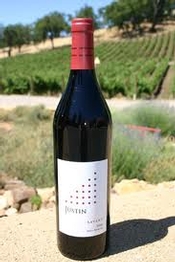 Justin Vineyards & Winery Justin Vineyards & Winery
Gold 2007 Savant Paso Robles $45.00 - Anani Lawson
Silver 2007 Isosceles Paso Robles $62.00 - Desi Eschavarrie
Gold 2007 Justification Paso Robles $45.00 - Desi Eschavarrie
Silver 2007 Cabernet Sauvignon Paso Robles $26.00 - Jesse Rodriguez
Kilikanoon
Silver 2007 Blocks Road Cabernet Sauvignon Clare Valley $30.00 - David Lusby - Megan Yelenosky
Gold 2007 Covenant Shiraz Clare Valley $40.00 - Lisa Redwine
Gold 2006 Oracle Shiraz Clare Valley $70.00 - Andre Mack - Lisa Redwine
Korbin Kameron
Gold 2006 Cuvee Kristin Estate Blend, Estate Grown Sonoma Mountain $55.00 - Desi Eschavarrie - George Skorka
Gold 2005 Cabernet Sauvignon Sonoma Valley $40.00 - Jesse Rodriguez
Gold 2006 Merlot, Estate Grown Sonoma Mountain $35.00 - Will Costello
Middle Sister
Silver NV Rebel Red California $12.00 - Will Costello - Anani Lawson
Silver NV Mischief Maker Cabernet Sauvignon California $12.00 - Jesse Rodriguez
Silver NV Forever Cool Merlot California $12.00 - Jesse Rodriguez
Silver NV Goodie Two-Shoes Pinot Noir California $12.00 - Anani Lawson
Silver NV Smarty Pants Chardonnay California $12.00 - Lisa Redwine
Silver NV Drama Queen Pinot Grigio California $12.00 - Desi Eschavarrie - George Skorka
Silver NV Surfer Chick Sauvignon Blanc California $12.00 - Anani Lawson
Navarro Vineyards
Gold 2009 Edelzwicker Anderson Valley $13.00 - Anani Lawson
Silver 2009 Muscat Blanc Anderson Valley $19.00 - Jesse Rodriguez - Michael Scaffidi
Best of Show White, 2009 Gewurztraminer Anderson Valley $19.00 - Andre Mack - Lisa Redwine
Gold 2009 Gewurztraminer Late Harvest Anderson Valley $35.00 - Andre Mack - Lisa Redwine
Niner Wine Estates
Best of Class Merlot, 2007 Merlot, Boot Jack Ranch Paso Robles $24.00 - Jesse Rodriguez
Northstar
Gold 2006 Merlot Walla Walla Valley $60.00 - Andre Mack - Lisa Redwine
Gold 2006 Merlot Columbia Valley $41.00 - Andre Mack - Lisa Redwine
Click here for complete Sommelier Challenge results.
Posted by Robert Whitley at 10:28 AM
|
|
September 16, 2010
Over the course of the past week we've been cleaning up in the aftermath of the 2nd annual Sommelier Challenge International Wine Competition, primarily preparing the award certificates for mailing.
This task affords me an opportunity to take a closer look at the results. Upon further review, invariably a number of performances stand out. Today we will take a look at a few of those.
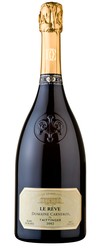 What I get from this exercise is a sense of the quality being driven by certain wineries, such as Belhurst Estate Winery of Geneva, New York, which is located in the Finger Lakes viticultural area. Belhurst played in some fast company over the weekend and came away with an award for Best of Show rose wine, two gold medals and two silvers. What I get from this exercise is a sense of the quality being driven by certain wineries, such as Belhurst Estate Winery of Geneva, New York, which is located in the Finger Lakes viticultural area. Belhurst played in some fast company over the weekend and came away with an award for Best of Show rose wine, two gold medals and two silvers.
Or B.R. Cohn, the Sonoma Valley winery that claimed Best of Class Chardonnay, plus two golds and a silver. These wineries are obviously doing something right.
The following is a partial list of the stellar performers from the Somm Challenge, with the name or names of the awarding sommeliers.
B.R. Cohn
Gold 2007 Cabernet Sauvignon, Olive Hill Estate Vineyards Sonoma Valley $55.00 - Will Costello
Gold 2008 Pinot Noir Russian River Valley $40.00 - Megan Yelenosky
Best of Class Chardonnay, 2008 Chardonnay, Sangiacomo Vineyard Carneros $29.00 - David Lusby - Megan Yelenosky
Silver 2009 Sauvignon Blanc, Grieve Family Vineyard Napa Valley $22.00 - Brian Donegan - Jennifer Tremayne
Barefoot Bubbly
Silver NV Moscato Spumante California $11.00 - Jesse Rodriguez - Michael Scaffidi
Silver NV Brut Cuvee California $10.00 - David Lusby - Megan Yelenosky
Gold NV Extra Dry California $10.00 - David Lusby - Megan Yelenosky
Platinum NV Pinot Grigio California $11.00 - Desi Eschavarrie - George Skorka
Barefoot Cellars
Silver NV Pinot Noir California $7.00 - Brian Donegan - Jennifer Tremayne
Platinum NV Muscato California $7.00 - Jesse Rodriguez
Silver NV Pinot Grigio California $7.00 - Jesse Rodriguez - Michael Scaffidi
Platinum NV Riesling California $7.00 - Andre Mack - Lisa Redwine
Silver NV Sauvignon Blanc California $7.00 - Andre Mack - Lisa Redwine
Belhurst Estate Winery
Best of Show Rose 2009 Dry Rose New York $19.00 - David Lusby - Megan Yelenosky
Silver NV Naturel Sparkling Wine Finger Lakes $19.00 - David Lusby - Megan Yelenosky
Silver 2009 Gewurztraminer Finger Lakes $19.00 - Andre Mack - Lisa Redwine
Gold 2009 Dry Riesling Seneca Lake $19.00 - Anani Lawson
Gold 2009 Semi-Dry Riesling Seneca Lake $18.00 - Will Costello
Chateau Ste. Michelle
Platinum 2007 Meritage, Artist Series Columbia Valley $50.00 - David Lusby - Megan Yelenosky
Silver 2006 Ethos Cabernet Sauvignon Columbia Valley $38.00 - Brian Donegan - Jennifer Tremayne
Platinum 2007 Cabernet Sauvignon, Canoe Ridge Estate Horse Heaven Hills $28.00 - Brian Donegan - Jennifer Tremayne
Domaine Carneros by Taittinger
Gold 2006 Brut Cuvee Carneros $26.00 - Anani Lawson
Gold NV Cuvee de la Pompadour Brut Rose Carneros $36.00 - Andre Mack
Gold 2004 Le Reve Blanc de Blancs Carneros $85.00 - Brian Donegan - Jennifer Tremayne
Eagles Trace
Gold 2005 Latitude 38, Estate Grown Napa Valley $75.00 - Jennifer Tremayne
Gold 2005 Cabernet Sauvignon, Estate Grown Napa Valley $60.00 - Will Costello - Anani Lawson
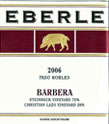 Eberle Winery Eberle Winery
Gold 2008 Barbera Paso Robles $26.00 - Brian Donegan - Jennifer Tremayne
Gold 2007 Cabernet Sauvignon, Estate Paso Robles $34.00 - Anani Lawson
Silver 2008 Sangiovese Paso Robles $23.00 - Anani Lawson
Gold 2008 Zinfandel Paso Robles $24.00 - Jesse Rodriguez
Gold 2009 Viognier, Mill Road Vineyard Paso Robles $21.00 - Desi Eschavarrie
Francis Ford Coppola
Gold 2007 Cabernet Sauvignon, Director's Cut Alexander Valley $28.00 - Lisa Redwine
Silver 2008 Zinfandel, Director's Cut Dry Creek Valley $23.00 - Michael Scaffidi
Gold 2008 Chardonnay, Reserve, Saralee's Vineyard Russian River Valley $25.00 - Michael Scaffidi
Silver 2008 Chardonnay, Director's Cut Russian River Valley $20.00 - Michael Scaffidi
Franciscan
Platinum 2006 Magnificat Napa Valley $50.00 - Desi Eschavarrie - George Skorka
Gold 2007 Cuvee Sauvage Chardonnay Carneros $40.00 - Lisa Redwine
Click here for complete results of the 2010 Sommelier Challenge.
Posted by Robert Whitley at 10:22 AM
|
|
September 15, 2010
Randall Grahm, the estimable California winemaker, often calls them his “lovable orphans,” or some such term of endearment. He is speaking of the obscure grape varieties of the world that are his passion.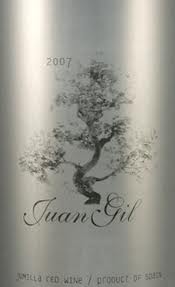 The wines of Bonny Doon have long been a road map of sorts for curious wine enthusiasts, crafted as they often are from grapes no one ever heard of outside of the old country. The old country could be anywhere, but it’s mostly the south of France, the width and breadth of Italy, and remote regions of Spain. The wines of Bonny Doon have long been a road map of sorts for curious wine enthusiasts, crafted as they often are from grapes no one ever heard of outside of the old country. The old country could be anywhere, but it’s mostly the south of France, the width and breadth of Italy, and remote regions of Spain.
This is where indigenous grapes stand against the tide of the so-called “international” grape varieties – Cabernet Sauvignon, Merlot, Chardonnay, Pinot Noir and Sauvignon Blanc – that seem to be crowding the landscape with each passing vintage.
Every once in a while a wine made from indigenous grapes breaks through and goes global. Witness the popularity of Albarino from Spain’s Rias Baixas, a white wine that was virtually unknown 20 years ago. More recently Austrian Gruner Veltliner and Argentine Malbec have produced a global following. There is a common thread throughout: affordability, accessibility and quality. The best wines made from those grapes grown in those places are simply delicious.
These once-obscure gems are secrets no more. It’s now time for the curious to move on, for the world of wine is chock full of other hidden treasures. Just to name a few:
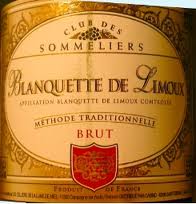 Blanquette or Cremant de Limoux are sparkling wines from an area of the Languedoc around the Abbey of Saint-Hilaire, where legend holds that the method for producing sparkling wine was formulated by the monks in residence, who shared their secret with Dom Perignon as he made the pilgrimage from the Abbey of Hautvillers in France’s Champagne region to Santiago de Compostela in northwestern Spain. These are wonderful yet inexpensive bubblies. What distinguishes Blanquette from Cremant is the selection of grapes. Blanquette is made mostly from the Mauzac grape; Cremant from Chenin Blanc and Chardonnay. Blanquette or Cremant de Limoux are sparkling wines from an area of the Languedoc around the Abbey of Saint-Hilaire, where legend holds that the method for producing sparkling wine was formulated by the monks in residence, who shared their secret with Dom Perignon as he made the pilgrimage from the Abbey of Hautvillers in France’s Champagne region to Santiago de Compostela in northwestern Spain. These are wonderful yet inexpensive bubblies. What distinguishes Blanquette from Cremant is the selection of grapes. Blanquette is made mostly from the Mauzac grape; Cremant from Chenin Blanc and Chardonnay.
Falanghina is a white wine from Campania, in southern Italy near Naples. It has long been considered inferior to the star white wines of the region – Greco di Tufo and Fiano di Avellino – and, as a result, is far less expensive. The affordability factor has drawn attention to Falanghina and its virtues, which include an uncommonly intense minerality. Falanghina also exhibits floral notes, nuances of yellow and red citrus and, sometimes, toasted almond. As the assessment of Falanghina is revised upward, expect prices to rise as well. Still, very good to excellent Falanghina can be found in the $15 range.
Jumilla is a red wine from the rugged Spanish province of Murcia, near the town of Yecla in the southeast corner of Spain. The wine industry of this region enjoyed a renaissance throughout the 1990s, after a bout with phylloxera (a vine pest) necessitated replanting most of the vineyards. The primary grape is Monastrell, which is called either Mataro or Mourvedre in other parts of the world. The high elevation of the otherwise hot wine-growing region provides a nurturing environment for the Monastrell grape and enables it to retain acidity and freshness. The wines of Jumilla are bold and full-bodied, but with a modicum of elegance. And they’re generally dirt cheap (less than $20) given the quality.
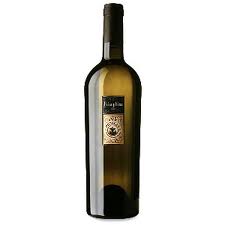 Negroamaro is a red wine made exclusively in southern Italy, mostly around Salento in the region of Puglia. Negroamaro makes a rustic, sometimes tannic wine that is often blended with Malvasia Nera, Sangiovese or Montepulciano. Its name is derived from the color of the grape (negra) and a slightly bitter (amaro) aftertaste. This earthy wine exhibits red and black fruit flavors when young, and develops aromas of leather and forest floor as it evolves. It generally retails for less than $20. Negroamaro is a red wine made exclusively in southern Italy, mostly around Salento in the region of Puglia. Negroamaro makes a rustic, sometimes tannic wine that is often blended with Malvasia Nera, Sangiovese or Montepulciano. Its name is derived from the color of the grape (negra) and a slightly bitter (amaro) aftertaste. This earthy wine exhibits red and black fruit flavors when young, and develops aromas of leather and forest floor as it evolves. It generally retails for less than $20.
Picpoul de Pinet is a crisp, floral white wine produced in the Coteaux du Languedoc, near Narbonne in the south of France. It has a mineral edge, and firm acidity that makes it the perfect foil for shellfish, particularly freshly shucked oysters, which are common in the region. Fruit aromas trend toward tropical and citrus, such as pineapple, grapefruit and lime. These wines never see the inside of an oak barrel, so they are fresh, clean and crisp. They rarely retail for more than $15, and around $10 is the norm.
Posted by Robert Whitley at 6:54 PM
|
|
September 14, 2010
(Robert Whitley's Creators Syndicate Wine Talk column for this week.)
I had just put the Sommelier Challenge to bed and posted the results on the website when I decided to announce the biggest winners on Twitter.
A few tweets into it, and I had a query that surprised me. Someone wanted to know why we published the medal-winning wines, but not the wines that failed to impress. To me, the answer is obvious. The medal-winning wines are the recommendations of the professional judges who evaluated the entries. Publishing the names of wines that failed to win a medal might unnecessarily embarrass the winery that submitted the entry. Nobody is served by that.
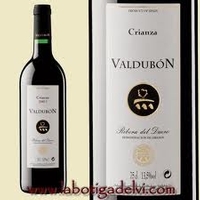 Wines that fail to win a medal are not necessarily bad wines. No doubt some were poorly made, but in many cases, a wine simply doesn't perform well because it's going through a stage of its evolution that is not particularly flattering. Young wines are like that. Sometimes the fruit shows, sometimes it doesn't. Sometimes the tannins seem to be supple and nicely integrated; sometimes they are hard or aggressive. Wines that fail to win a medal are not necessarily bad wines. No doubt some were poorly made, but in many cases, a wine simply doesn't perform well because it's going through a stage of its evolution that is not particularly flattering. Young wines are like that. Sometimes the fruit shows, sometimes it doesn't. Sometimes the tannins seem to be supple and nicely integrated; sometimes they are hard or aggressive.
As the Twitter query unfolded, the question of the consumer benefit came up. Wouldn't it be useful — the question was asked — if the consumer knew all of the wines entered to better understand the framework of the evaluation? Good question. It would be useful if the wine competition were a horse race: with one winner, a second-place finisher, and so on through the entire field of horses.
That's not how a wine competition works. At the wine competitions I manage (five major international events) and those I have judged, such as the Concours Mondial in Brussels, each wine is treated as a stand-alone entity and evaluated on its merits. The wines only "compete" if they advance to what my wine competitions call the "sweepstakes" round, where best of class and best of show awards are determined.
At that point, a wine has already received whatever medal the judges believe it deserves. In theory, a gold-medal wine should be of a certain quality whether there were 300 wines or two wines entered in its class. Wines are not graded on a curve, so the "framework" question is irrelevant.
The benefit to the consumer, of course, is that he or she can piggyback the preferences of well-qualified wine judges when making wine-buying decisions. The Sommelier Challenge is judged exclusively by professional sommeliers. All of the Sommelier Challenge results are available on the web at SommelierChallenge.com.
A few of the highlights, from my perspective:
 Sommeliers are always on the lookout for well-balanced, food friendly wines, which is what they came up with in their 2010 Wine of the Year. That distinction went to a wine from Spain's Ribera del Duero district, which is 100 percent Tempranillo. The overwhelming favorite of the dozen sommeliers who joined in the evaluation was the 2003 Valdubon Crianza Ribera del Duero, $18. Sommeliers are always on the lookout for well-balanced, food friendly wines, which is what they came up with in their 2010 Wine of the Year. That distinction went to a wine from Spain's Ribera del Duero district, which is 100 percent Tempranillo. The overwhelming favorite of the dozen sommeliers who joined in the evaluation was the 2003 Valdubon Crianza Ribera del Duero, $18.
Value was hardly the only consideration over the weekend, for the judges made the pricy Delille Cellars 2006 Grand Ciel Cabernet Sauvignon ($135) from Washington's Red Mountain AVA their top vote-getting Cabernet.
Washington also produced the best of class Bordeaux blend, the Steppe Cellars 2007 Artemisia ($27) from Columbia Valley.
This is basically a Cab-Merlot blend with a few other grape varieties thrown in.
The award for Best of Show white wine confirmed something we already knew: Mendocino County's Anderson Valley is perhaps California's sweet spot for Alsatian whites or any aromatic white grape. The honor went to the 2009 Navarro Vineyards Gewurztraminer, $19. Navarro's Gewurz is dry, well balanced and true to type. And it's not the first time this exceptional winery has won a major competition award with one of its white wines.
Chardonnay doesn't seem to get much love these days in wine competition sweepstakes voting, but that doesn't mean there are no good Chardonnays entered. B.R. Cohn's 2008 Sangiacomo Vineyard Chardonnay, Carneros ($29) won best of class Chardonnay, and it is truly a lovely wine.
Carneros also scored with Gloria Ferrer taking Best of Show sparkling wine with its non-vintage Va de Vi ($22), an extra-dry bubbly that offers seductive aromas of white peach and tropical fruit. Gloria Ferrer is an old hand at winning sweepstakes awards, most recently with its Royal Cuvee and Carneros Cuvee blends.
Best of Show red wine, of course, was the Valdubon Crianza that was voted Wine of the Year. Europe also produced other strong contenders for best red wine, including the delicious 2006 Quinta da Zaralhoa Douro DOC Reserva ($20) from Portugal. Another wine from Spain, the Morlanda 2004 Crianca Priorat DOQ ($48), had good support in the final round of voting for best red wine.
Email comments to Robert Whitley at whitleyonwine@yahoo.com.
Posted by Robert Whitley at 11:30 AM
|
|
September 7, 2010
 In my Creators Syndicate column this week I offer up Ten Chardonnays Anyone Could Love. Read the entire column here. In my Creators Syndicate column this week I offer up Ten Chardonnays Anyone Could Love. Read the entire column here.
The Ten Chardonnays are wines I tasted at either the Critics Challenge International Wine Competition or the San Diego International. They are medal-winners all. And they are:
Cakebread 2008 Chardonnay, Napa Valley ($37) — As consistently outstanding as any Chardonnay to be found in the Napa Valley, Cakebread is often overlooked in this category only because its Cabernet Sauvignon is so good.
Flora Springs 2008 Barrel Fermented Chardonnay, Napa Valley ($30) — This winery gets my vote as the Napa Valley's most underrated, and that includes its Barrel Fermented Chard, which has been a star in the Flora Springs lineup for more than 20 years. Even when other California wineries were wandering in the Chardonnay wilderness, Flora Springs managed to get it right. They still do.
Franciscan 2007 Cuvee Sauvage Chardonnay, Carneros ($40) — It has been my experience that the Cuvee Sauvage from Franciscan ages as well or better than just about any other Napa Valley Chard. This one is fermented with wild rather than cultured yeasts, and it's always among the most complex Chardonnays produced in the United States.
Grgich-Hills 2007 Chardonnay, Napa Valley ($42) — I have long considered Grgich among the most iconic of California Chardonnays. Winemaker and founder Mike Grgich is the genius who made the brilliant Chateau Montelena Chardonnay, which won the infamous Paris tasting in the 1970s. And his own wines under the Grgich-Hills banner have been no less good.
Frank Family Vineyards 2008 Chardonnay, Napa Valley ($32.50) — Judges at the San Diego International loved this Chardonnay, awarding it Platinum and nominating it for Best of Show white wine. It didn't win, but make no mistake, this is a serious Chardonnay. It embodies the richness and heft of Chardonnay from the Napa Valley, yet maintains a measure of balance and elegance. Good stuff!
Jordan 2008 Chardonnay, Russian River Valley ($29) — The Jordan Chardonnay has long lived in the shadows of the Jordan Cabernet Sauvignon. That was due, at least to some extent, to vineyard sources that didn't always measure up. Jordan is on a new track with its Chardonnay these days and the quality now rivals that of the Cabernet. In fact, the Jordan Chard was voted Best Chardonnay at this year's Critics Challenge.
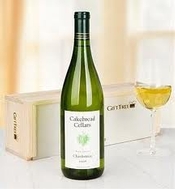 Laboure-Roi 2006 Chablis Premier Cru Reserve, France ($48) — If you've ever wondered what everyone's talking about when they mention "minerality" in a wine, try a top-flight Chablis. The limestone soils and cool climate combine to produce Chardonnay that is flinty and mineral driven rather than ripe and fruity. The Laboure-Roi Premier Cru Reserve is an excellent example of a Chablis that hits it just right between the elements of fruit and minerals. Laboure-Roi 2006 Chablis Premier Cru Reserve, France ($48) — If you've ever wondered what everyone's talking about when they mention "minerality" in a wine, try a top-flight Chablis. The limestone soils and cool climate combine to produce Chardonnay that is flinty and mineral driven rather than ripe and fruity. The Laboure-Roi Premier Cru Reserve is an excellent example of a Chablis that hits it just right between the elements of fruit and minerals.
Ortman Family Vineyards 2007 Chardonnay, Edna Valley ($24) — Founding winemaker Chuck Ortman (his son, Matt, is now making the wines) was once known as Mr. Chardonnay because of his earliest Chardonnays at such wineries as Spring Mountain and Far Niente. He later founded Meridian and made the wines there for 20 years before leaving to do a small family winery. Chuck was always fond of Edna Valley Chardonnay, and this vintage of OFV reminds me of many of the Meridian Chardonnays he made from Edna Valley. It's rich on the palate and full bodied, but it's beautifully structured and well balanced.
Sonoma Cutrer 2008 Chardonnay, Sonoma Coast ($24) — This Chardonnay is a step up from Sonoma Cutrer's Russian River Ranches bottling that seems to be the ubiquitous restaurant Chardonnay. It has better structure and is slightly more complex, but not much more expensive. The Sonoma Cutrer Chardonnays are uniformly outstanding food wines, and this one is no exception. It displays an attractive lemon oil aroma and is supported with good acidity.
William Fevre 2008 Champs Royaux Chablis, France ($23) — If ever you feel the need for Chardonnay with freshly shucked oysters, Champs Royaux would be the one. It is fresh and crisp, with a flinty mineral character and aromas of tart lime, lemon and green apple, but it ultimately has a creamy texture despite the crispness and pungency. A very complex Chablis for this price point.
Posted by Robert Whitley at 9:25 AM
|
|
 |
|